Renowned as Velankanni, Basilica of Our Lady of Good Health is one of the country’s biggest Catholic pilgrimage centres. Its breathtaking location on the Coromandal Coast of the Bay of Bengal lies in the Nagapattinam district in the Southern State of Tamil Nadu, India. Velankanni is now being developed as a heritage city by the Government of India.
Popularly known as the ‘Lourdes of the East’, its origin dates back to the 16th Century. The magnificent structure is built in the Gothic style and later was modified and expanded by the Portuguese. In the year 1962, the status of Basilica was raised by Pope John XXIII. From the 29th of August to the 8th of September, the 11-day annual festival is celebrated. It concludes with the celebration of the ‘Feast of the Nativity of Mary’.

Velankanni is 350 km south of Madras, now Chennai, 33 km southeast of Thiruvar and 12 km south of Nagapattinam. Velankanni is famous for Basilica of Our Lady of Good Health – one of the most visited Roman Catholic Latin Rite shrines. Each year, pilgrims of all religions from all over the world pay their humble visit to experience divine intervention in their lives.

The Velankanni Basilica contains three chapels, as well as ‘Our Lady’s Tank’, ‘Church Museum’, ‘Priests’ Residence’, ‘Offering Centre’, ‘Stations of the Cross’, ‘Stations of the Rosary’, ‘Shrine Mega Mahal’ and ‘Vailankanni Beach’. The layout of the Basilica complex is numbered accordingly: 1. Basilica; 2. Nadu Thittu Shrine – site of the Second Apparition; 3. Adoration & Reconciliation Chapel; 4. Our Lady’s Pond – site of First Apparition; 5. Stations of the Cross; 6. Stations of the Rosary; 7. Stations of the Sacraments.

The Basilica is built in the Gothic style of architecture. In the year 1928, the Southern side was extended. Five years later in 1933, the Northern side was extended. The colour white is predominant with red-tiled roof of the Basilica, which is quiet pleasing to the eyes while depicting an ambiance of purity and calmness all around.
Interestingly, history shows that the Church of the Immaculate Heart of Mary was demolished in the year 1928. The statues were installed later to the Shrine of Our Lady of Good Health. Later in 1933, the Shrine was expanded to the right and to the left with two new wings meeting the nave at right angles.

In the year 1956, a new welcome arch built and was blessed opened by Bishop Sundaram. The illuminated arch attracted attention as it stood to show the way to eager pilgrims. Five years later, a new central altar was built in white marble to replace the previous one made of concrete in 1961.
Behind the existing central altar, an extension of the Basilica was built to accommodate the multilingual services during the 1974 – 1975. A two-storied Church with 93 ft. high dome and 82 ft. high Gothic spirals was designed and constructed to resemble the Basilica in Lourdes, France.

Behind the altar, a spacious vestry was provided so that the entire sacred edifice could assume the shape of a ‘Latin Cross’. The miraculous image of Our Lady of Good Health lies right over the centre of the ancient main altar.
History dates back to the mid-16th Century for the devotion to Our Lady of Good Health of Velankanni. An amazing attribution of three miracles had worked at the holy site as devotees’ belief grew stronger since then. The apparition of Blessed Mary and the Christ Child to a slumbering shepherd boy was the first one. The second one was the healing of a handicapped buttermilk vendor, and the third apparition was the unbelievable rescue of Portuguese sailors from a deadly sea storm.

The hot month of May in the year 1570, a local shepherd boy is believed to be delivering milk to a nearby house. On the way, the boy met a beautiful woman holding a child. She asked for some milk for the baby. The boy gave the woman some milk for the baby and marched ahead in the hot Sun to deliver the milk.

After delivering the milk, the boy was stunned to find his empty jug full of fresh and cool milk once again. A small shrine was built by locals near the site where the shepherd boy met the woman with a baby in her arms. The location was called ‘Maatha Kulam’ in Tamil, which means ‘Mother’s Pool’.

27 years later, the second apparition is recorded in the year 1597, very near to ‘Maatha Kulam’ site. A young crippled boy was selling buttermilk. A beautiful woman with a young boy in her arms appeared. The young boy asked the crippled boy for some buttermilk and the crippled boy gladly gave him some. After the young boy drank the buttermilk, the beautiful woman asked the boy to go and meet a gentleman in the next town.
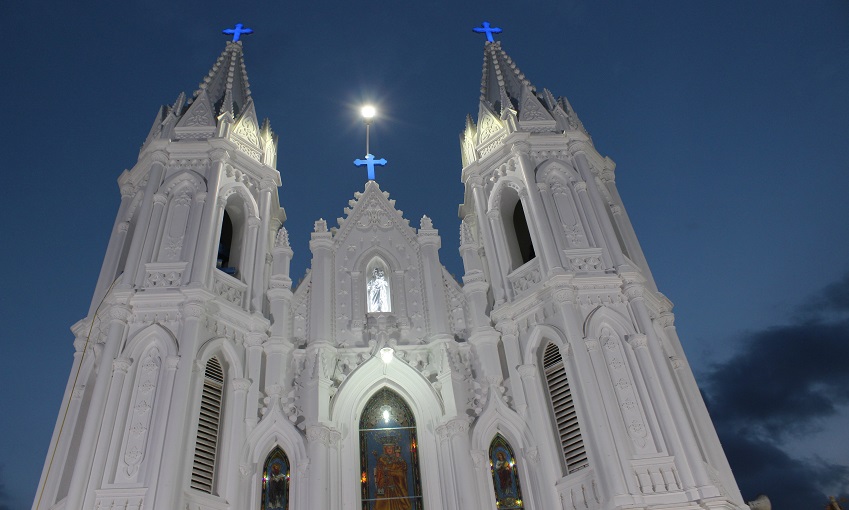
She asked the crippled boy to ask the gentleman to build a chapel in her honour at the location. As a miracle, the crippled boy immediately set out for the next town before realizing that he had been completely healed and he was no longer lame. In honour of ‘Aarokia Maatha’ in Tamil means ‘Our Lady of Health’, a small thatched chapel was built.
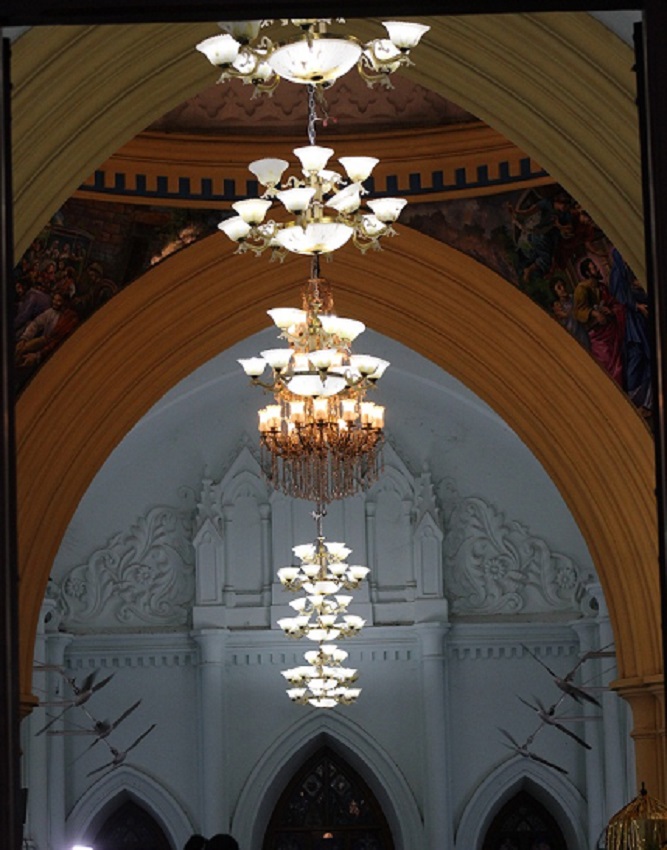
The third apparition is recorded as a supernatural event that occurred when a Portuguese ship sailing from Macao to Ceylon then, now Sri Lanka, was caught up in a deadly storm in the Bay of Bengal. The sailors pleaded Virgin Mary under her title ‘Star of the Sea’ to save them from the deadly storm. The miracle happened and the deadly storm subsided on its own immediately.
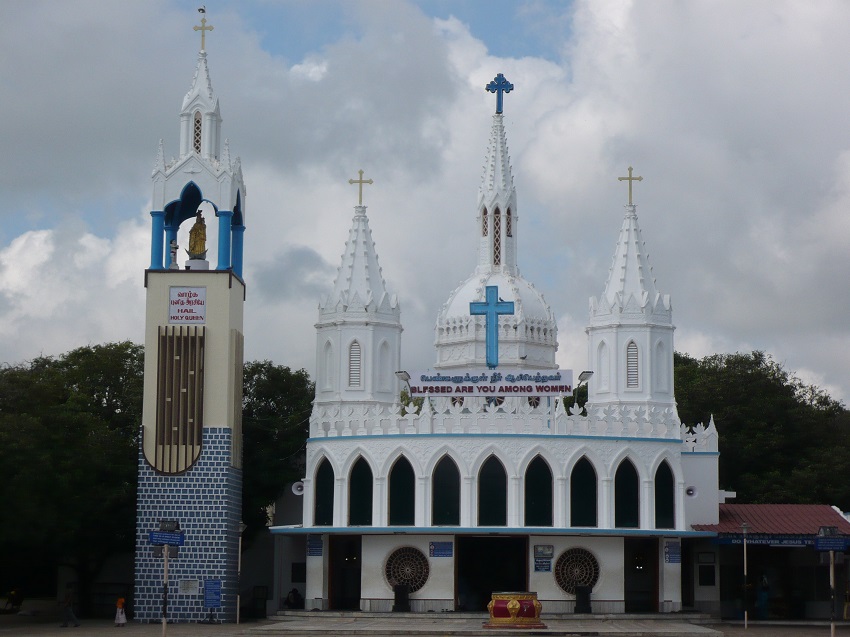
All the 150 sailors on board the ship safely reached Sri Lanka. The incident happened on the 8th of September – the feast day of the Nativity of Mary. As ‘thanksgiving’ for their lives, the sailors rebuilt the shrine and continued to visit the shrine. They continued to donate to the cause of the shrine, whenever their voyages brought them to Velankanni area.
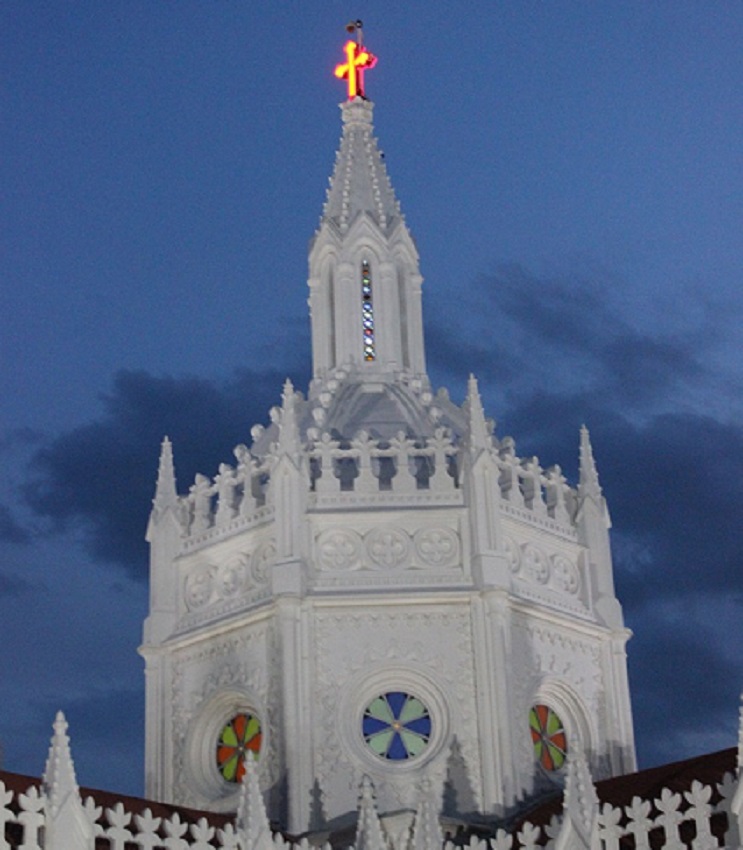
Indian Catholoics were persecuted in the erstwhile Dutch Coromandel after the Luso – Dutch was waged by Dutch Protestants. From a mid-16th Century thatched Chapel the church became a Parish Church in the year 1771.
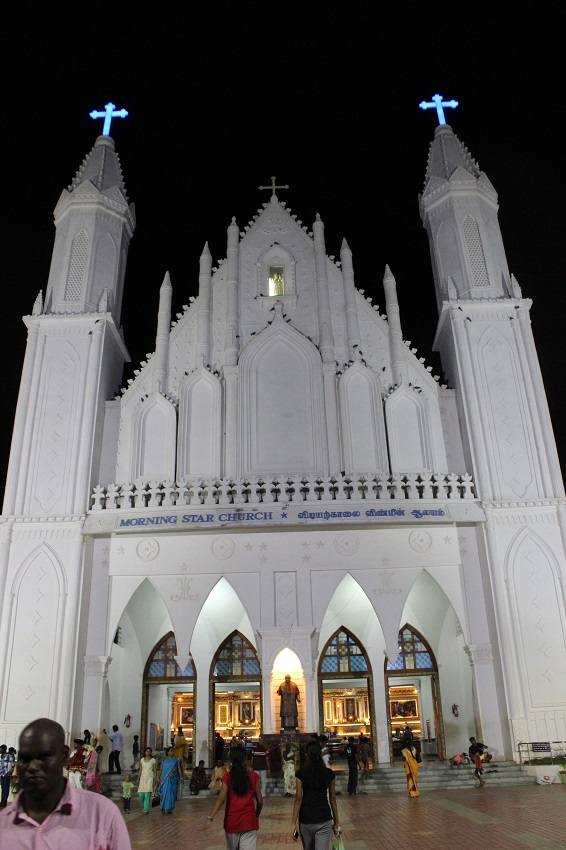
Photography: Johnny D